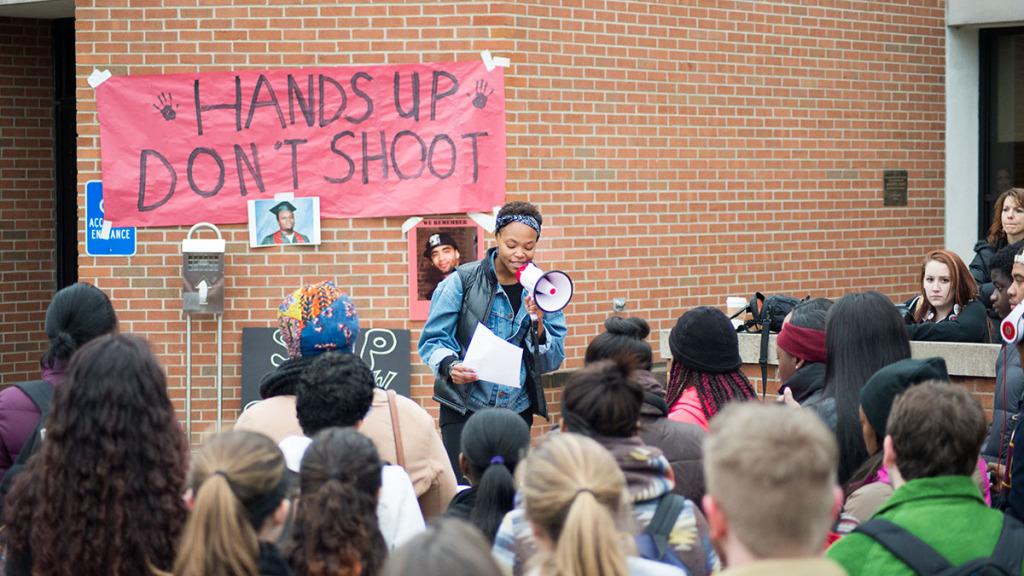The world has been moving so fast these past few months that everyone has vertigo. On Dec. 1, more than 200 members of the Ithaca College campus gathered for a rally to honor Mike Brown, Eric Garner, Shawn Greenwood, other victims of police brutality in the U.S. and the 43 Mexican students who “disappeared” after being taken into police custody. The murder of Brown, a black teenager, by a white police officer, Darren Wilson, sparked extensive protests against militarism in Ferguson, Missouri. Garner, a 43-year-old black male, was murdered in an altercation in which police officer Daniel Pantaleo placed him in an illegal chokehold. The news continued to spin inside the minds of students across the nation.
With the report of no indictment for both Wilson and Pantaleo, the anger and frustration reached a boiling point. In this past week — full of emotions and rage — students organized a rally, held meetings and staged a “die-in” in IC Square, the Campus Center and outside of Emerson Suites. This was done to communicate to our peers the severity and urgency to address these issues, as ignoring them comes at the cost of being complacent in the oppression of others and reproducing acts of structural violence.
After the die-in demonstration, which led to a march to the Peggy Ryan Williams Center, many individuals have questioned why the chants demanding “Justice for Eric Garner” and “Justice for Mike Brown” were followed by a demand for a faculty tenure-tracked position to restructure the Native American Studies program. Such questions seem strange given the fact that the structural violence that is responsible for the deaths of Brown, Garner, Tamir Rice, Akai Gurley and the 43 Mexican students is the same kind of violence that is responsible for the colonial mass genocide of indigenous people.
Last fall I took Introduction to Native American Studies, and I learned how essential Native American Studies is to understanding the violence of colonialism against black and brown people here in the United States. Today, Introduction to Native American Studies is nonexistent due to the administration’s apathetic view toward the program and its inherent value. Native American Studies is imperative to understanding the current social movements in the U.S. and the larger situation of the oppressed. Since President Tom Rochon expressed to the student body that we have his advocacy for the restructuring of the minor, I’m sure he agrees, given his extensive research in social movements. The college was built on Cayuga Nation territory, and the City of Ithaca was built in the wake of the scorched-earth campaigns executed by John Sullivan in 1779. In fact, his exact instructions were “not [to] merely overrun, but destroy.” The students should not have to demand for a faculty tenure-track position for the Native American Studies program.
If the college does not feel a tenure-track faculty line is needed, then the institution will be consenting to oppression. This issue has always been larger than the isolated actions of law enforcement. It encompasses a greater aggregate of violence administered by the state — a violence that has its historical roots in the oppression of black and indigenous people.
Kayla Young is a senior history major. Email her at [email protected].














